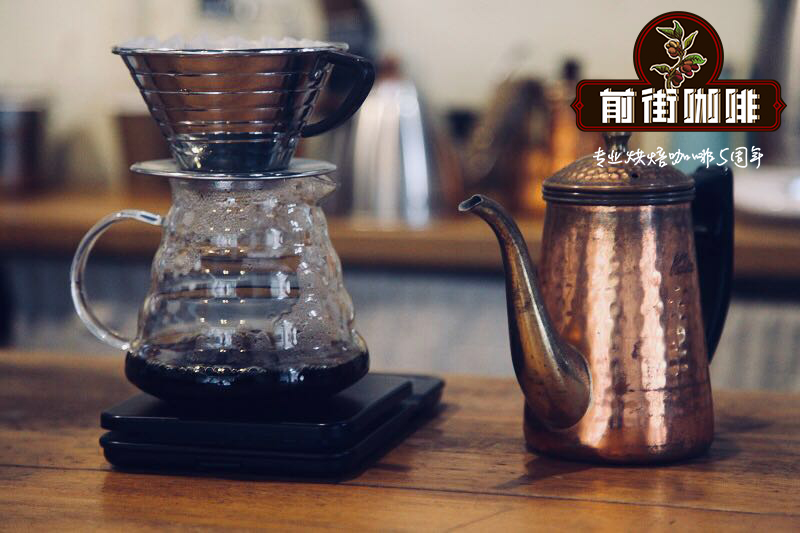Recommended Coffee for newcomers Guide to the selection of novice individual coffee

Professional coffee knowledge exchange more coffee bean information please follow the coffee workshop (Wechat official account cafe_style)
Qianjie-A guide to the selection of novice individual coffee
"single origin" is a widespread term in coffee and is usually simply interpreted as from a single producer, a single crop, or a region of the same producing country. On the other hand, "single manor" and "single producing area" represent that the coffee comes from the same manor, processing plant or cooperative, and then the buyer can see the name of the producing area, specific producing area or manor where the coffee is grown. It is even a micro-producing area (a specific variety in a particular manor).
The most important thing about a single cup of coffee is that it can be traced back to the source. You can know exactly where the coffee came from. It is a single product rather than a mixed formula. Usually of higher quality, you can see the resumes of the production of specific estates, and the flavor of these coffees is as it should be, with the characteristics of specific coffee grown in a particular area.
Individual coffee is a kind of beans with personality. In general, boutique cafes will have 3-5 or more individual coffee beans for you to choose from:
Usually priority can be selected: African beans, American beans, or Asian beans represent: Mantenin (bitter), Yega with citrus flavor (sour), Costa Rican honey treatment (sweet)
Then, you can have a brief understanding of several common beans: if you like some sour beans, choose Kenya and Yejasuefei, and choose Blue Mountains and Mantenin if you like to be mellow. There are also some sweet beans, such as Rosa, with floral and sweet potato flavors.
Colombia, Nicaragua, Brazil-chocolate, nuts, caramel
Ethiopia, Tanzania, Rwanda-sweet, sour, nutty, lemon, sometimes sour
India, Indonesia, Papua New Guinea-botanical, spicy, salty
Coffee beans are mainly produced in Africa, Central and South America, Asia and the island region. African beans have the sweet and sour aromas of orange, berries and sugarcane, and the common ones are beans from Yegashifi and Sidamo. The flavor of Central and South American beans is well-behaved. Most Panamanian beans have jasmine fragrance, nectar-like sweetness and bright sour fruit. Costa Rica is soft and sour, with a hint of chocolate nuts. Asian beans and island flavor, mellow thickness than Central and South American beans and African beans, mostly medium and deep baking, with low aromas of herbs, pine and spices, and low acidity. Island beans are light and gentle.
In short: Qianjie is a coffee research hall, happy to share the knowledge about coffee with you, we share unreservedly just to make more friends fall in love with coffee, and there will be three low-discount coffee activities every month. The reason is that Qianjie wants to make more friends drink the best coffee at the lowest price, which has been Qianjie's tenet for 6 years!
END
Important Notice :
前街咖啡 FrontStreet Coffee has moved to new addredd:
FrontStreet Coffee Address: 315,Donghua East Road,GuangZhou
Tel:020 38364473
- Prev

A brief introduction to the skills of novice how to choose coffee bean taste
Professional coffee knowledge exchange more coffee bean information please follow the coffee workshop (Wechat official account cafe_style) front street-novice coffee choice 1, coffee bean types there are more than 100 kinds of coffee in the world, of which the most common two are Arabica and Robusta/Canephora. These two kinds of coffee are in terms of taste, composition and growing conditions.
- Next

Cuban Crystal Mountain Coffee-synonymous with Top Cuban Coffee
Professional coffee knowledge exchange more coffee bean information please follow the coffee workshop (Wechat official account cafe_style) front street-Cuban coffee introduction to Cuban coffee, the first thing that many people think of is Crystal Mountain Coffee! But in fact, Crystal Mountain is not the name of Cuba's producing area, but a level in the grading system of Cuba's official Coffee Association! The Coffee Association of Cuba
Related
- Beginners will see the "Coffee pull flower" guide!
- What is the difference between ice blog purified milk and ordinary milk coffee?
- Why is the Philippines the largest producer of crops in Liberia?
- For coffee extraction, should the fine powder be retained?
- How does extracted espresso fill pressed powder? How much strength does it take to press the powder?
- How to make jasmine cold extract coffee? Is the jasmine + latte good?
- Will this little toy really make the coffee taste better? How does Lily Drip affect coffee extraction?
- Will the action of slapping the filter cup also affect coffee extraction?
- What's the difference between powder-to-water ratio and powder-to-liquid ratio?
- What is the Ethiopian local species? What does it have to do with Heirloom native species?

